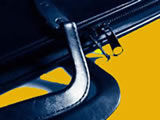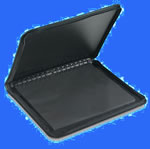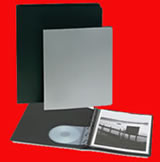 |  |  | |
News & Notices
News From:
Conference & Stage Expo
For the Record
| Tips for Costume Portfolio Reviews The portfolio reviews at the USITT Annual Conference & Stage Expo are valuable sessions that allow designers/technicians to showcase their work in the most effective manner. At the Conference, each Commission offers review sessions where professionals volunteer to offer productive feedback to participants. In past conferences, close to 75 review sessions were organized for Costume Design & Technology Commission members. The Commission encourages all participants to share in these sessions. Volunteering as a reviewer can be quite inspiring and helpful to both the interviewee and the mentor. Having the courage to get a critique from professionals in the field can be of great value for the young designer/technician in building self-confidence and setting next steps.
The presentation aspect of the review includes the candidate, his work, and his portfolio book. It can be divided into three categories:
This is the review part and there are three key aspects to consider:
For more information and to sign up, contact Rafael Jaen at: rafael_jaen@emerson.edu. Provide specialty or concentration, undergraduate or graduate level, and college or organization affiliation.
| 
Illustrations/Courtesy Rafael Jean | |
United States Institute for Theatre Technology, Inc.: © 2009 Volume XLIX, Number 2
 Putting a portfolio together for presentation can seem like an impossible undertaking, yet there are ways to ease the process. Perhaps the two most important aspects can be summarized as presentation and review.
Putting a portfolio together for presentation can seem like an impossible undertaking, yet there are ways to ease the process. Perhaps the two most important aspects can be summarized as presentation and review.  Part of the excitement in putting a portfolio together is the ability to plan details such as page layout, content variety, and aesthetic sequencing. The portfolio then becomes a showcase of the designer/technician's process, resourcefulness and artistry.
Part of the excitement in putting a portfolio together is the ability to plan details such as page layout, content variety, and aesthetic sequencing. The portfolio then becomes a showcase of the designer/technician's process, resourcefulness and artistry.